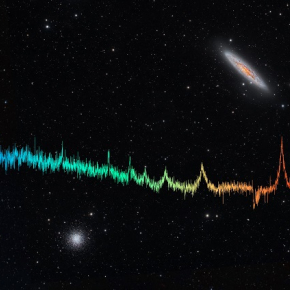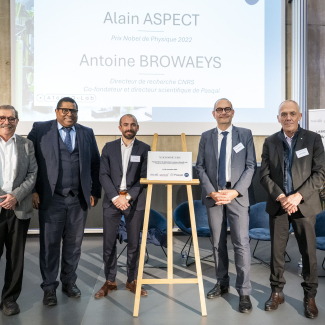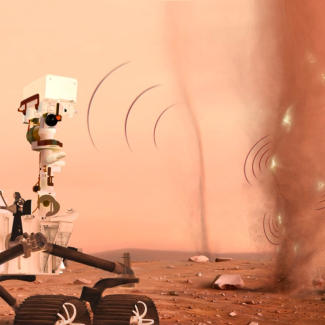
The state-of-the-art 4MOST cosmograph sees its first light
|
The 4MOST instrument, installed on the Visible and Infrared Survey Telescope for Astronomy (VISTA) at the European Southern Observatory (ESO) in Chile and developed in large part by CNRS teams at Université Claude Bernard Lyon 1 and ENS Lyon, has captured its first light. This first light collected from space and analysed by 4MOST’s spectrographs marks the beginning of a vast adventure to study and map the sky. Thanks to its cutting-edge technology, 4MOST can study the light of 2,400 cosmic objects simultaneously and every 15 minutes.
Mapping the universe at record speed
On 18 October 2025, the 4-metre Multi-Object Spectroscopic Telescope (4MOST) installed on the Visible and Infrared Survey Telescope for Astronomy (VISTA) at the European Southern Observatory (ESO) in the Atacama Desert in Chile captured its first light observations in the sky (Figure 1). This first light is not a snapshot of space: 4MOST registers spectra – light captured from cosmic objects that is split into colour components across the visible light range, from violet to red. Using individual optical fibres, it can capture the light of 2,436 cosmic objects in 18,000 wavelengths.
In development since 2010, the three 4MOST spectrographs will operate for at least 15 years, allowing astronomers to investigate a range of subjects, from the composition of stars to dark matter and dark energy. Scientists will analyse spectra from thousands of objects captured at 10-20 minute intervals to record the temperatures, chemical compositions, movement and distances of tens of millions of stars in the Southern skies.
4MOST is the largest multi-object spectrograph in the Southern hemisphere. Its extensive field of view – five times larger than the Moon – along with the number of sources it can observe simultaneously and the detail in its spectra make the instrument truly unique.
A significant French contribution
France and CNRS have played a major role in the development of this European instrument. Two of its three spectrographs were created by the CRAL (Centre de recherche astrophysique de Lyon) (CNRS/Université Claude Bernard Lyon 1/ENS de Lyon).
These two low-resolution, identical spectrographs (LRS) are vital to ensuring that 4MOST covers the entire colour spectrum, from 370 to 950 nm. The third, high-resolution spectrograph looks at higher wavelength resolution in three selected colour bands. Scientists use the spectrographs, each of which is connected to 812 optical fibres the width of a human hair, to conduct vast surveys of the sky, making VISTA and its four-metre mirror the world’s largest telescope for this type of research (Figure 2).
The French team of around 15 engineers, technicians and researchers has taken part since 2014 in the design, assembly and testing of the spectrographs until they were fitted onto the telescope this summer. “4MOST has been an incredible adventure, technically speaking and for the team,” said Florence Laurent, an optical engineer at CNRS. “Driven by talented and complementary international teams at multiple locations, this project illustrates the power of a collective working to achieve a common goal: science.” The instrument is eagerly awaited by the world’s astrophysics community, explains Johan Richard, an astronomist at the same laboratory: “It will multiply by tenfold our ability to map large regions of the sky. The volume of physical measurements we’ll obtain for such distant objects is truly impressive!”
A promising first light
4MOST’s first light observation demonstrates the full potential of the instrument, which can observe a broad field of view while simultaneously analysing several thousand cosmic objects at once (Figure 3).
One of the most noteworthy observations was the Sculptor Galaxy (NGC253), the largest in the Southern sky after the two Magellanic Clouds. The galaxy’s visible diameter equals that of the Moon, but its fainter brightness makes it much harder to see.
Another object seen was the NGC 288 globular cluster, formed over 13 billion years ago in the earliest phases of the formation of the Milky Way and composed of around 100,000 stars containing only small amounts of elements heavier than hydrogen and helium.
In total, spectra from over 2,000 sources were analysed (Figure 4), including stars in our galaxy for which we now know the temperature, mass, diameter, velocity, age and chemical composition. 4MOST simultaneously generated spectra from over 100 galaxies – as far as 10 billion light years away (Figure 5) – to determine their distance, movement, star formation history and their central black holes.
Over 700 people from universities and research institutes around the world will work with 4MOST. Twenty-five science programmes involving several CNRS research laboratories are already in place for the next five years.
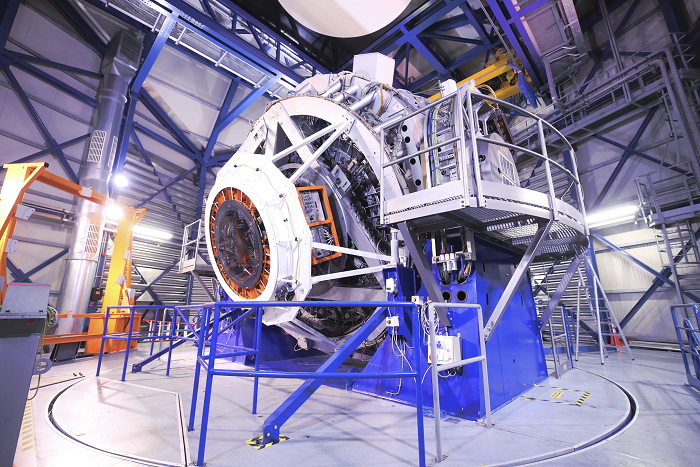

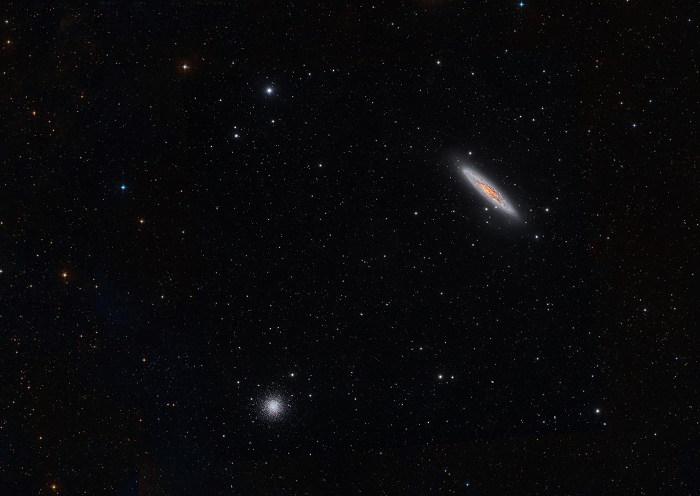
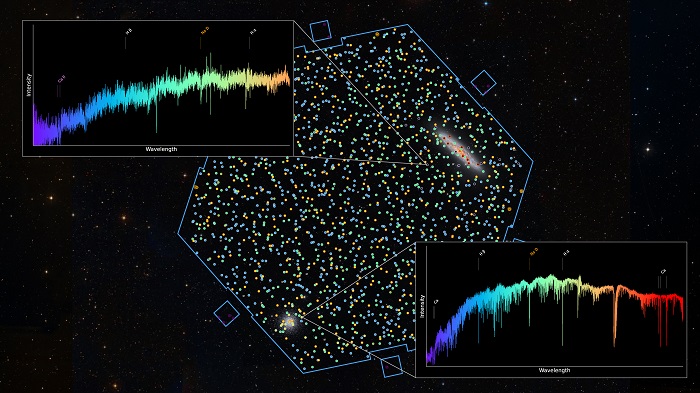

Additional images
The following images can be downloaded at the address below and used for communications (Correct credits must be given).
Download here: https://cloud.osu-lyon.fr/s/kpqXiL5CY2Gjwo4
Video resources
Video: "4MOST, the new generation cosmograph"
YouTube: https://www.youtube.com/watch?v=0hQNNodQTiU
Canal U: publish after the press release
Download here: https://filesender.renater.fr/?s=download&token=b9197e18-3d10-4c7a-aada-0e2a84ab640b
Short presentation of the 4MOST instrument, made by the team on site inside the VISTA dome just after its installation and before the first light observations. CRAL Researcher Johan Richard presents its design and different components.
Credit: Roelof de Jong (AIP) / Knowledge sharing office at the Lyon Observatory
Video: “The 4MOST spectrograph for ESO’s VISTA telescope”
YouTube: https://www.youtube.com/watch?v=FsdjX4URtwA (with English-language subtitles)
Canal U: https://www.canal-u.tv/chaines/observatoire-lyon/l-instrument-4most-pour-le-telescope-vista
Download: https://filesender.renater.fr/?s=download&token=55d41c2b-a2ee-45c6-bed0-59928dd8b845
Presentation of one of the two low-resolution spectrographs (LRS) produced at the Lyon Observatory before its transfer to Potsdam with Johan Richard, astrophysicist at CRAL and Scientific Director of the 4MOST project.
Credit: Knowledge sharing office at the Lyon Observatory
Video: “4MOST Spectrographs Installed — Our New Eye on the Cosmos!”
YouTube: https://www.youtube.com/watch?v=3D-b5Q6INJI
Timelapse video of the installation of 4MOST on VISTA.
Credit: Allar Saviauk / AIP
